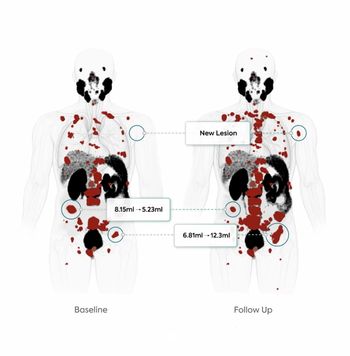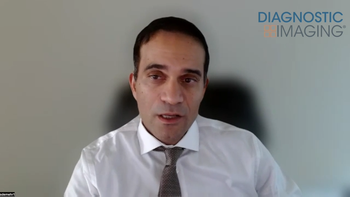
Pre-Operative MRI Catches More Cancers in Women with Dense Breasts
MRI catches more malignant lesions in women with dense breasts who undergo digital breast tomosynthesis than those who have digital mammography alone.
Pre-operative MRI can catch more breast lesions in women with dense breasts who have receive their initial breast cancer diagnosis via digital breast tomosynthesis (DBT).
Together, investigators from a multi-institutional team determined that pre-operative MRI does perform differently between women who undergo DBT and those who have digital mammography (DM). They shared their results in the Oct. 13
“In our study, we found a trend of increasing detection by MR of additional sites of malignancies in patients with dense breasts compared to those with non-dense breasts, irrespective of initial imaging modality – DM versus DBT,” said the team led by Elizabeth McDonald, M.D., Ph.D., assistant professor of radiology at the Hospital of the University of Pennsylvania.
Related Content:
Based on their results, McDonald’s team discovered MRI detected additional malignant lesions in 57 percent of all women with dense breasts included in their study. This finding can be potentially critical because approximately 43 percent of American women between the ages of 40 and 74 have dense breasts, and evidence continues to mount that they could benefit from supplemental screening.
For more coverage based on industry expert insights and research, subscribe to the Diagnostic Imaging e-Newsletter
DBT is known to have a higher cancer detection rate in women regardless of their breast density, but little is know about how it compares to MRI in this regard.
“To optimize the use of breast MR in pre-surgical planning, it is necessary to identify a subset of patients who will benefit most from this exam,” they said.
To determine the impact of pre-operative MRI in detecting more cancers, the team conducted a retrospective analysis of 388 consecutive breast MRIs captured for newly diagnosed breast cancers between Oct. 1, 2013, to July 31, 2015. The original diagnosis was made either by DM or DBT, and the team stratified identified disease by modality, breast density, and background enhancement.
According to their analysis, pre-operative MRI picked up 50 additional malignancies – 37 ipsilateral and 13 contralateral. While there was no difference in MRI detection of additional disease between women imaged with either modality, MRI did detect more cancers in women with dense breasts who underwent DBT.
“There were significantly higher discordant MR findings in patients with dense breasts (p=0.004) with a trend toward significance for true-positive exams (p=0.06),” the team said. “In patients imaged with DBT, those with non-dense breasts had significantly fewer additional cancers detected by MR.”
Overall, they said, 7 percent of women with non-dense breasts had additional cancers identified versus 18 percent of women with dense breasts. In addition, background parenchymal enhancement on MRI was also significantly higher in patients with mammographically dense breasts.
“These findings suggest that in women imaged with DBT, MR may have less value for determining extent of disease in women with non-dense breasts,” the team said. “Among patients with DBT imaging at cancer diagnosis, women with dense breasts appear to benefit more from pre-operative MR than non-dense women.”
Newsletter
Stay at the forefront of radiology with the Diagnostic Imaging newsletter, delivering the latest news, clinical insights, and imaging advancements for today’s radiologists.





